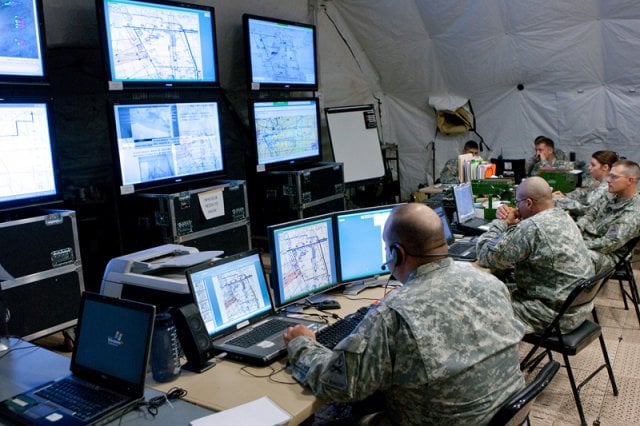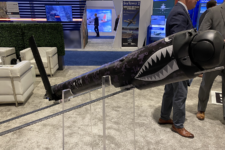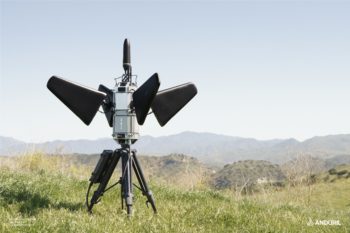
Lt. Gen. Bruce Crawford, the Army’s CIO
AUSA: Faced with a grave threat from Russian advances in electronic warfare over the last five years, the US Army really will develop a useful, effective and adaptable tactical network after a decade of missteps and failures. Really.
[Click here to download our free ebook on the Army’s network travails]
“The urgency of now is upon us,” Lt. Gen. Bruce Crawford told reporters and aides to explain why the Army would act and get things fixed. That was the message from the generals and civilians leading the Army’s network efforts who appeared in an unwieldy panel yesterday. (The Army loves to put these panels on. They seem to be a reflection of the service’s approach to acquisition: throw good people at it from multiple parts of the bureaucracy and hope they can all make sense of it.) It was a message similar to the one they delivered to a very skeptical Congress late last month. And it was a message was greeted with skepticism from myself and other media who have heard the Army make similar claims for at least five years.
Basically, Russian forces have the ability to monitor electronic emissions, feed the data to fire control systems and rain death down on Ukrainian and, potentially, NATO forces. That threat looms especially large for any Tactical Operations Center (TOC), the ungainly collection of generators, tents, computers and communications gear. They and their generators light up the battlefield. And, as Crawford said, “if our TOCS can be found, they can be killed.”

Army command post
As for the networks the Army currently uses, they “do not meet the operational requirements of the Army.” So there’s clearly a host of good reasons to scrap the planned approach and start over.
But why, I asked Crawford, the Army’s Chief Information Officer, should anyone believe the Army this time when it says it will get things right this time?
Boil his talking points down and it comes to this: We have to.The threat is so compelling that “we have to do it differently.” Crawford added that the Army is taking a different approach this time because they had been taking a capabilities-based approach and this is the “first time we’ve been threat-focused.” So it would be reasonable to conclude the Army made the wrong decision and is now trying to fix that. It also helps, we heard, that the senior Army leadership is focused on this, from Chief of Staff Mark Milley on down.

Gen. Mark Milley
Since the Army has been saying its network was the key to its future success for about a decade, it’s not terribly reassuring that the service’s top leadership is now focusing on them. But those of us who have been following the Army for more than a decade know too well that acquisition has been an Achilles’ Heel of the service since, well, the end of the Cold War.
I spoke with several of the generals on the panel after it ended and they conceded that the Army had not done the best job of building these networks but said it had fielded some good kit that did the job needed during the counterinsurgency operations of the last 15 years. As anyone who deals with the modern Army knows, it’s good at dropping everything for the fight it’s in, but is not usually so good at getting ready for the next one.
To help fix this state of affairs, Crawford told Congress, the service “will immediately halt procurement of the Mid-Tier Network Vehicular Radio (MNVR) and legacy Command Post of the Future (CPOF). The Army will also halt procurement of Warfighter Information Network-Tactical (WIN-T) Increment 2 at the end of FY18.” The nation has, so far, spent $6 billion developing WIN-T. Crawford and his team are scrambling to change the requirements and get the network gear to our forces lickety-split.
After the panel, I spoke with seven Army and industry sources who follow network issues. They all expressed wry skepticism about the service’s ability to fundamentally change how effectively it builds requirements for and buys networks.
Let’s all hope the Army of the Decker-Wagner Report is dead and this one can build the electronic warfare and network tools we need to better the manage the Russians, Chinese and our other global friends.
Anduril debuts Pulsar AI-powered electronic warfare system
Company executives claimed the Pulsar system can use AI tools to quickly identify new threats and devise defenses against them, compressing the timeline for responding to rapidly-evolving electronic warfare.


























